Summer Academies
GeoFORCE Texas Summer Academies are week-long academies that introduce our students to geological wonders throughout the United States!
Through hands-on field work and in-class group projects, students learn about the formation of the Earth and the geological processes that shape it. The academies are led by geology professors and research scientists from top universities around the country, including the Jackson School of Geosciences. High school science teachers and industry professionals assist instructors on each trip, along with GeoFORCE alumni, now in college, serving as counselors.
These hands-on experiences offer students the opportunity to learn about science in ways they simply can’t in the classroom. They will be fascinated, awestruck, and amazed. Each summer, students will learn more than they ever expected, and form deep and lasting friendships.
Check out where students in each Academy get to go every summer:
9th Grade Summer Academy
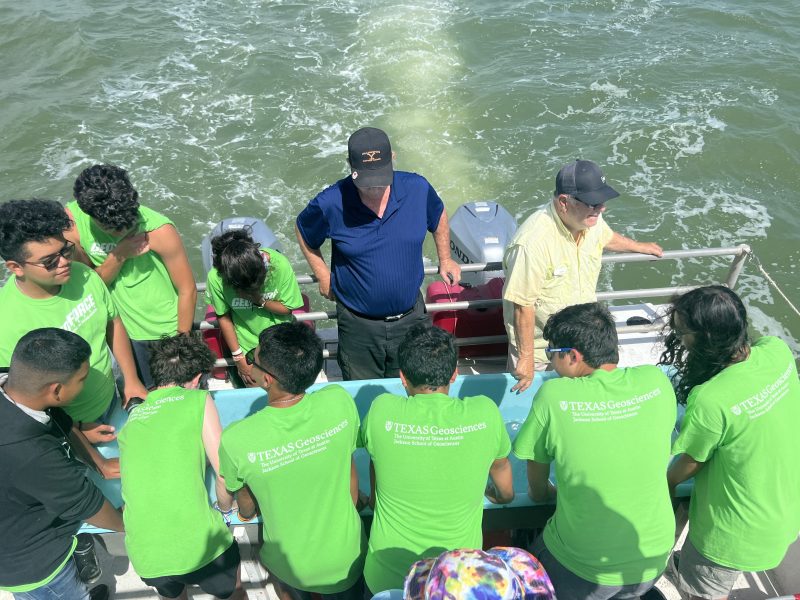
The 9th grade Summer Academy is where students are first introduced to geology as part of their GeoFORCE Texas adventure. The trip focuses on coastal processes and sedimentary environments.
We begin in central Texas to take a look at river processes in places like McKinney Falls State Park. After taking a bus to the Texas Coast, students begin their study of the geology of coastal environments. The trip includes time at Texas beaches measuring the beach profile, trenching to investigate different layers of sediment and studying longshore drift. Students also visit the Texas State Aquarium and may take a trip on a scientific research vessel. Returning home, students will be able to use their geologic knowledge and the confidence they have gained on this field trip as incoming high school freshman.
10th Grade Summer Academy
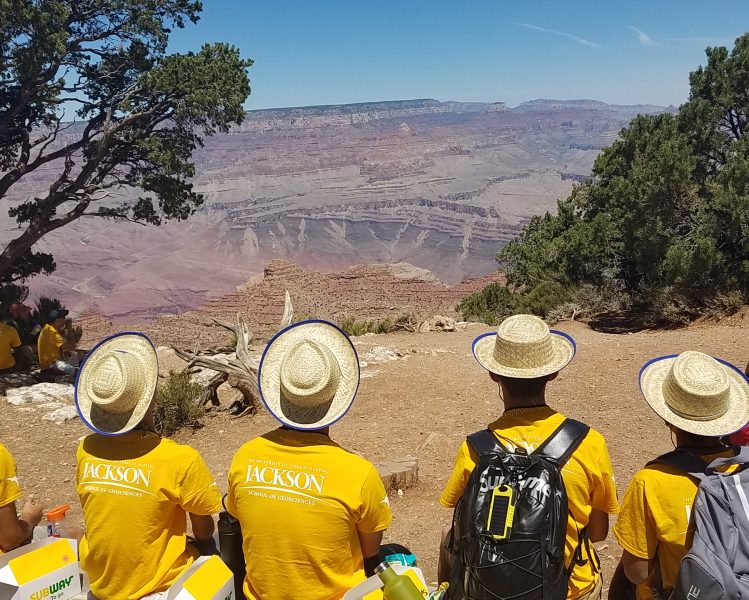
This academy is the second year of the program. Students have their freshman year of high school under their belt and are ready to open their eyes to the geology of the Southwest United States. Students discuss deep geologic time and how we see that in sedimentary rocks.
The group will fly into Las Vegas, Nevada and head to Utah, crossing into Arizona briefly on the way, meaning that students will travel to four states in a few hours. On the trip, students encounter some of the most spectacular scenery of the United States and learn about the rocks and the processes that created them over millions of years. The group visit Zion National Park, Glen Canyon Dam, and Grand Canyon National Park. The students get the opportunity to take a gentle raft ride down the Colorado River and an awesome hike in the Grand Canyon on the South Kaibab Trail. The trip builds on the Coastal Texas experience by introducing a wider variety of sedimentary rocks, older rocks, and discussions of deep geologic time.
11th Grade Summer Academy
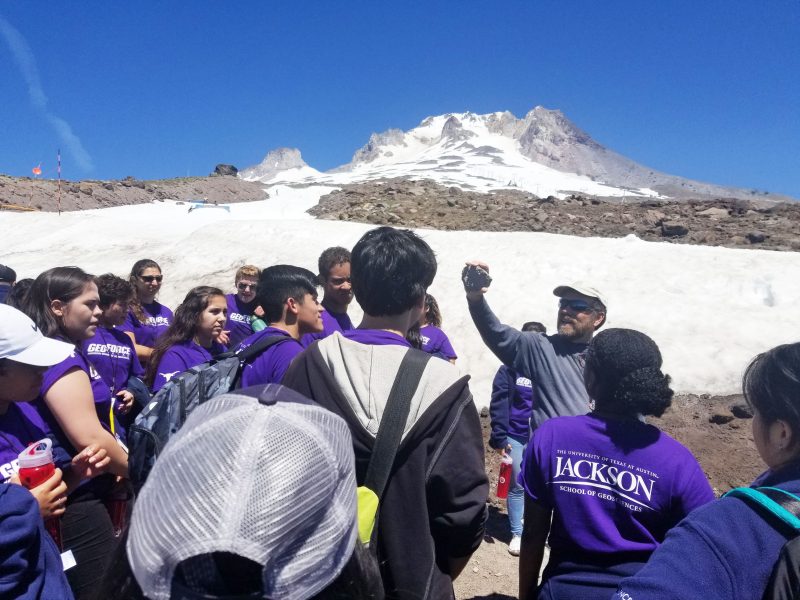
The 11th grade Summer Academy takes GeoFORCE rising juniors on a spectacular geologic journey to the Pacific Northwest. This trip adds igneous rocks, geologic hazards, and active tectonic processes to the students’ growing geologic knowledge.
In the previous two academies, students studied carbonate rocks and coastal processes in Texas (year 1) and ancient sedimentary rocks in Arizona (year 2). In year 3, they travel to an active plate boundary to see how volcanoes and mountain ranges are formed and to compare higher-energy coastal processes with those seen on their first trip. Students will learn what causes earthquakes and will visit several active volcanoes, walk across recent lava flows, and traverse the heart of the Cascades along Lewis and Clark’s historic route to the Pacific Ocean.
Field stops include such geologically renowned places as Mt. St. Helens, Mt. Hood, the Columbia River Gorge, Crater Lake and its world-class clear blue water, and the sandy, gravelly, and rocky shores of the Pacific coast.
12th Grade Summer Academy
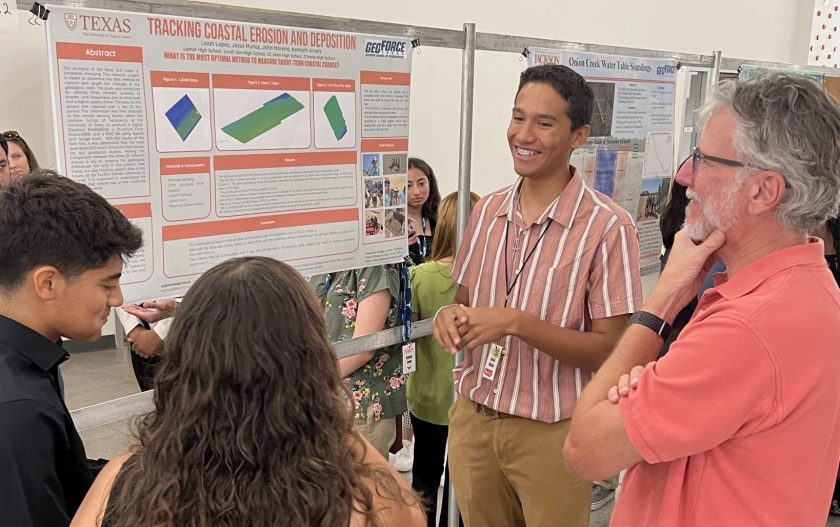
The 12th grade Summer Academy completes the fixed GeoFORCE adventure. After 4 summer academies, students have learned about the basic principles of geology and are ready to apply them in a more complex environment, a week-long research project!
The final trip brings the students back to Texas, where they stay at the University of Texas at Austin dormitory and partner with geoscience faculty and research scientists from the Jackson School of Geosciences in a research project. These research projects encourage students to connect the knowledge they’ve learned throughout their summers with the GeoFORCE program to real world problems. Each project is part of current ongoing work being conducted by Jackson School professors.
At the end of the week, students present their research at the GeoFORCE Symposium where students, research scientists, GeoFORCE staff, and parents meet and listen to the presentations created by each student group. The top students are then given the chance to join GeoFORCE in December and attend the American Geophysical Union (AGU) national conference. This conference brings together leaders in geology and allows our students to present at the AGU Bright STaRS session.
Virtual Academy

This week-long virtual academy teaches students valuable computer skills such as GIS and programming. Students who are currently registered for the in-person academies are invited to register and attend.
Math & Science Institute
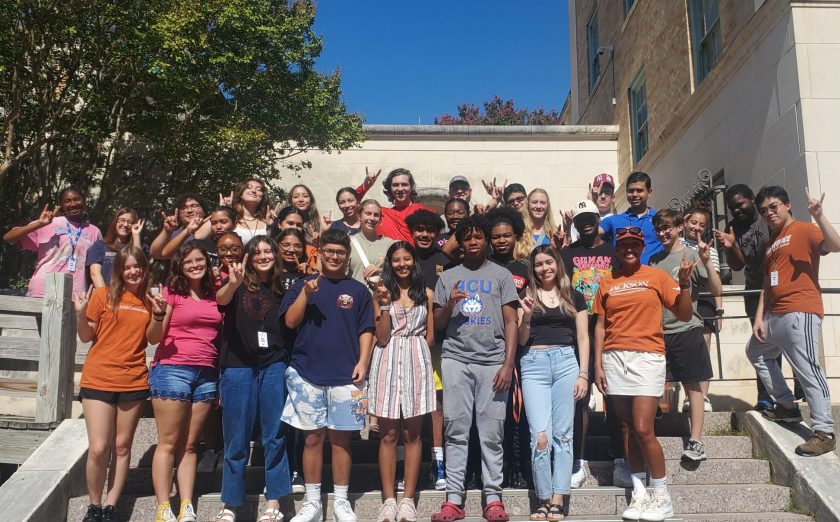
The summer before their first year of college, GeoFORCE alumni can apply to join us at the Math & Science Institute, where we go over introductory chemistry and calculus lessons, and discuss what college life may look like!



